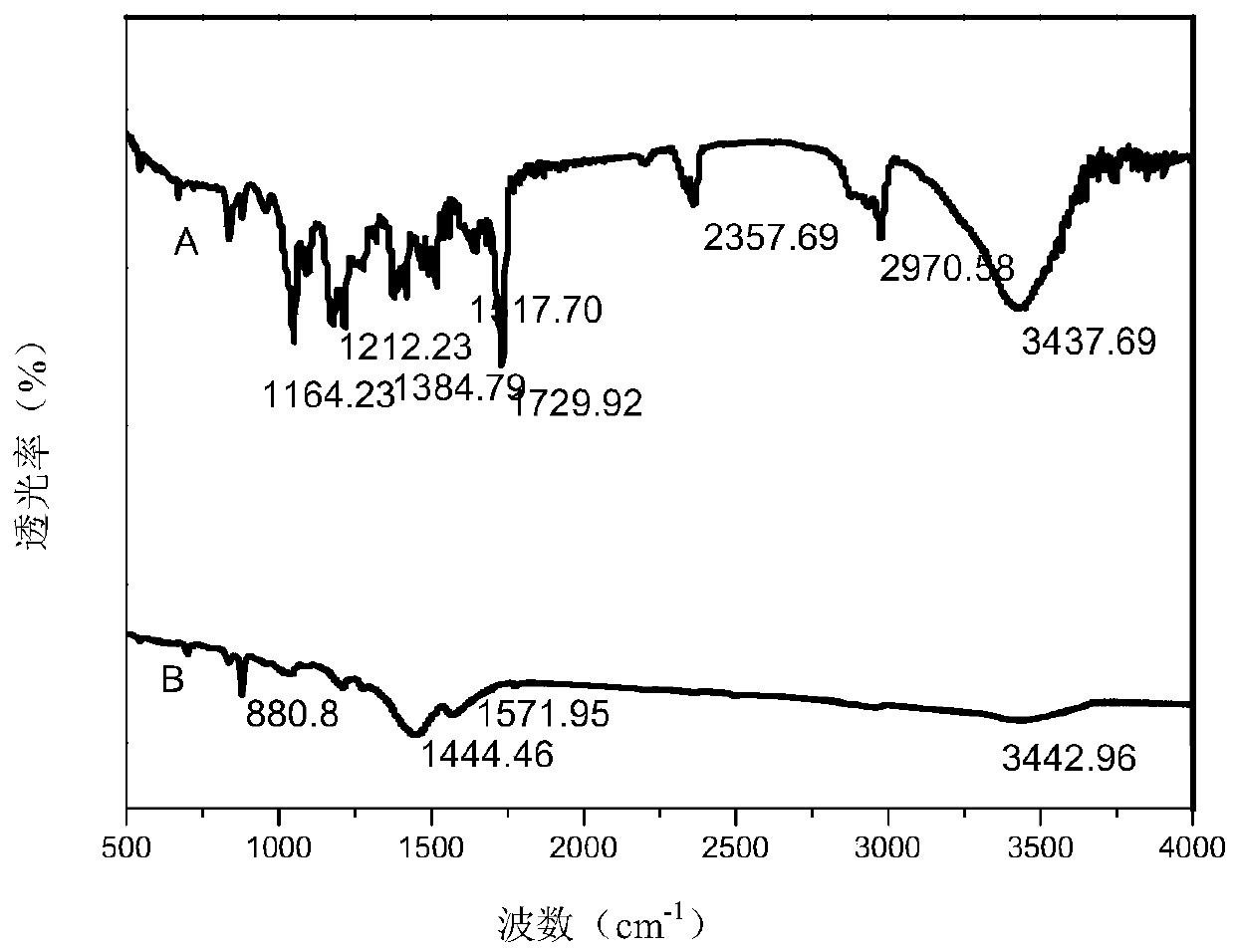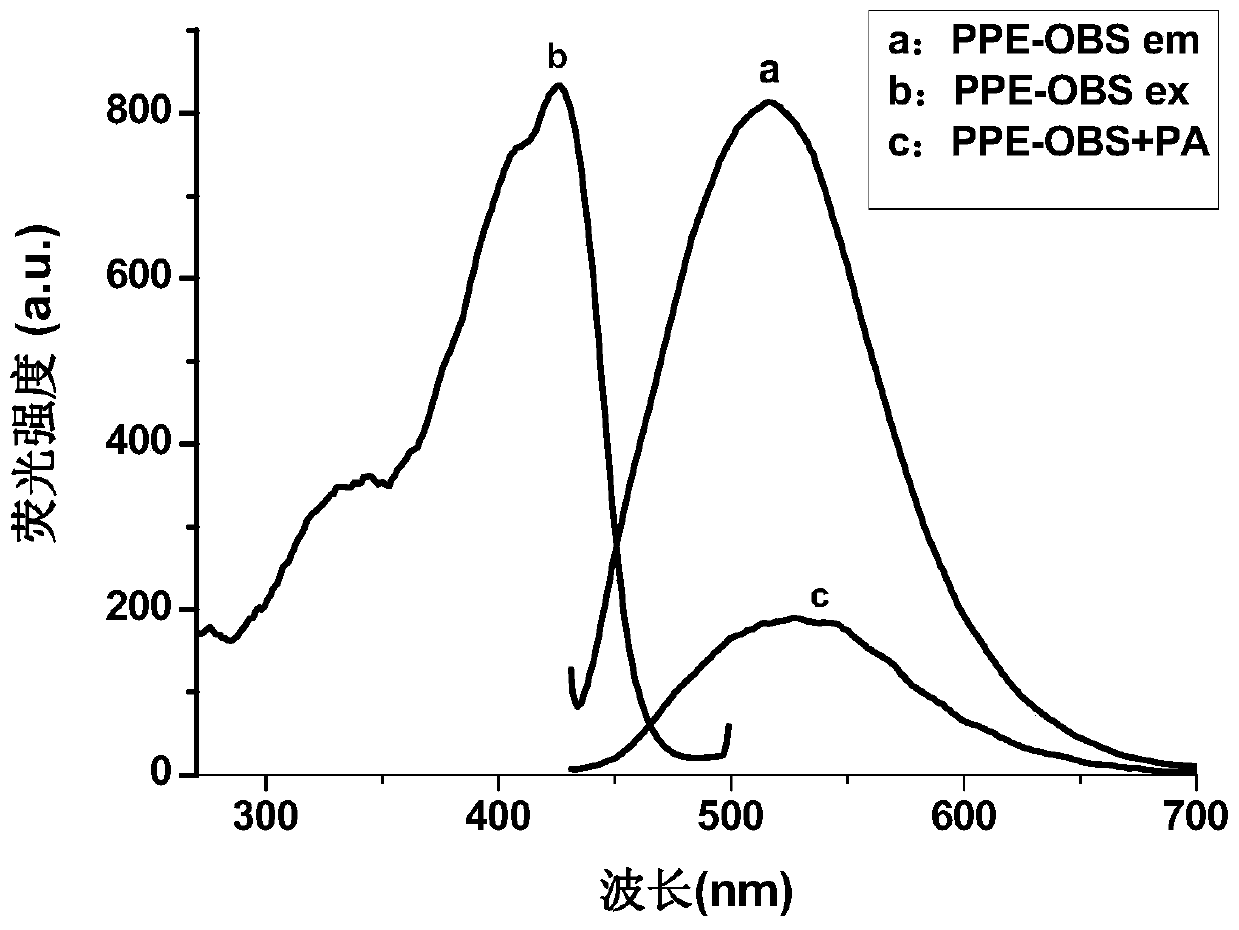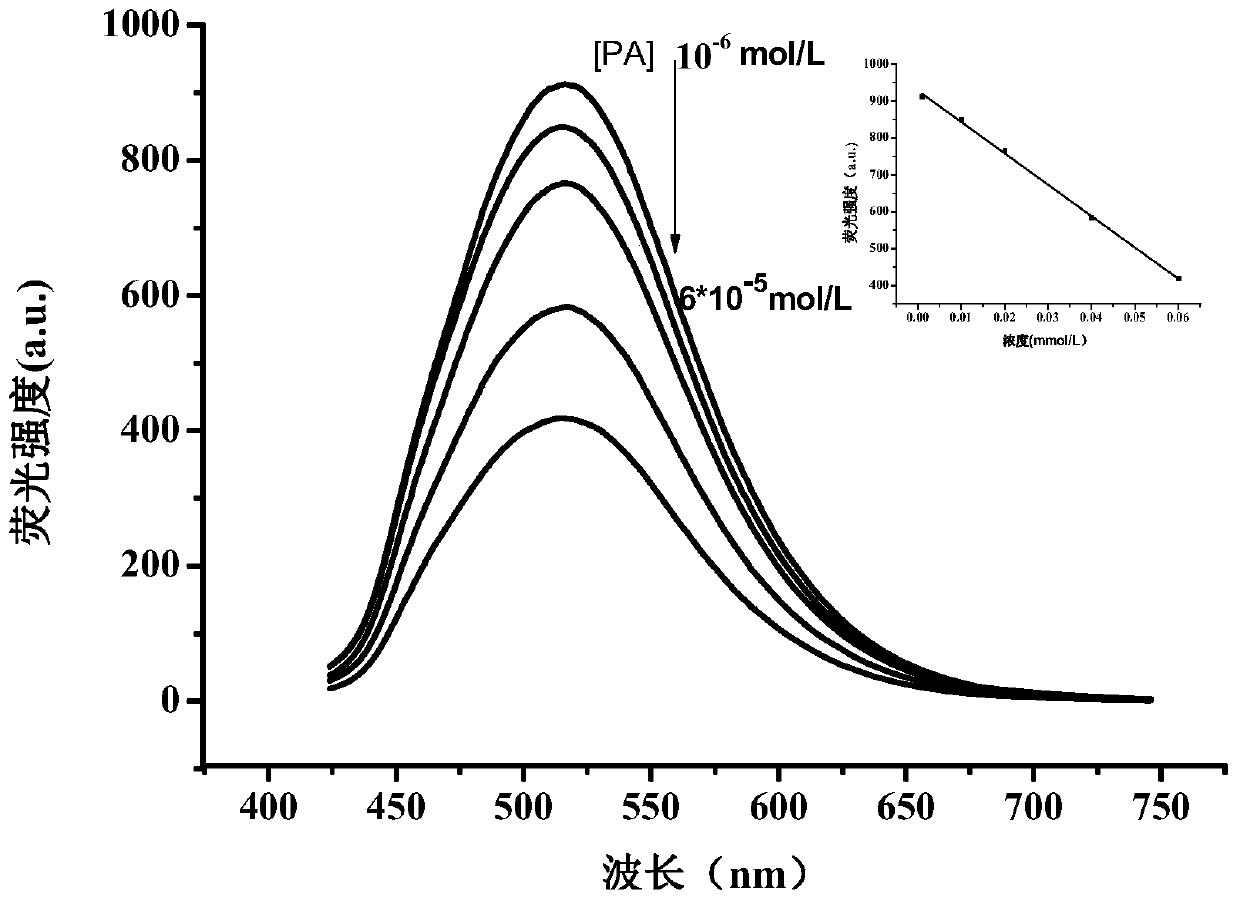A kind of test paper for detecting nitrobenzene explosives and its preparation method and application
A technology of nitrobenzene and detection test paper, which is applied in the field of environmental analysis, can solve the problems of limited sensor application and inability to effectively distinguish, and achieve the effects of broad application prospects, good detection sensitivity, and convenient detection
- Summary
- Abstract
- Description
- Claims
- Application Information
AI Technical Summary
Problems solved by technology
Method used
Image
Examples
Embodiment 1
[0036] Embodiment 1: the preparation of nitrobenzene explosives detection test paper.
[0037] Firstly, the PPE-OBS is synthesized through four steps, and finally the synthetic PPE-OBS is used to make the test paper for the detection of nitrobenzene explosives. The first step is to synthesize 1,4-bis(ethyl 4-oxyl-butanoic acid)benzene (M 1 ), under an argon atmosphere, hydroquinone and ethyl 4-bromobutyrate were refluxed for 24 hours to obtain 1,4-bis(ethyl 4-oxyl-butyric acid)benzene. The second step, use KIO 3 and I 2 Will M 1 Iodination of the benzene ring to give 1,4-bis(ethyl 4-oxy-butanoic acid)-2,5-diiodobenzene (M 2 ). The third step, 1,4-diethylbenzene and M 2 Polymerization occurs under the catalysis of tetrakistriphenylphosphine palladium to obtain the polymer precursor PPE-OBE. The fourth step is to hydrolyze the ester of PPE-OBE side chain into sodium carboxylate to obtain the final product PPE-OBS. The intermediate and final products were characterized by...
Embodiment 2
[0049] Example 2 Measurement of Fluorescent Properties of PPE-OBS Fluorescent Probes
[0050] Take 0.0224g of the PPE-OBS powder prepared in Example 1 and dissolve it with boric acid / sodium hydroxide buffer solution (0.2mol / L, pH=9.5) and settle it into a 500mL volumetric flask to prepare a PPE-OBS powder with a monomer concentration of 100μmol / L. PPE-OBS stock solution, keep away from light. Take 1500μL from the stock solution and add it to a 5mL centrifuge tube, add 30μL of picric acid standard solution (0.01mol / L) and dilute it to 3mL with boric acid-sodium hydroxide buffer solution (0.2mol / L, pH=9.5), measure its fluorescent properties. Depend on figure 2 It can be seen that the maximum fluorescence excitation wavelength of the fluorescent probe is 400 nm, and the maximum emission wavelength is 512 nm.
[0051] Take 1500 μL from the fluorescent probe stock solution in Example 2 and add it to a 5mL centrifuge tube. Add picric acid at a concentration of 1.0×10 -6 mol / L,...
Embodiment 3
[0052] Example 3 The detection of nitrobenzene explosives by the nitrobenzene explosives detection test paper
[0053] Figure 4 The fluorescence response curve of the nitrobenzene explosives detection test paper to picric acid is shown; Figure 5 The relationship between the fluorescence intensity of the nitrobenzene explosives detection test paper and the concentration of picric acid is shown. The addition of picric acid quenched the fluorescence of the test paper for the detection of nitrobenzene explosives, indicating that the test paper had a sensitive response to picric acid. The test paper for the detection of nitrobenzene explosives has a good linear response to low concentrations of picric acid.
[0054] The nitrobenzene explosives detection test paper has a yellow-green background under the ultraviolet light, and 2 μL of nitrobenzene explosives detection test paper is added dropwise to the concentration of 4mmol / L, 2mmol / L, 1mmol / L, 0.1mmol / L L of picric acid solu...
PUM
 Login to View More
Login to View More Abstract
Description
Claims
Application Information
 Login to View More
Login to View More - R&D
- Intellectual Property
- Life Sciences
- Materials
- Tech Scout
- Unparalleled Data Quality
- Higher Quality Content
- 60% Fewer Hallucinations
Browse by: Latest US Patents, China's latest patents, Technical Efficacy Thesaurus, Application Domain, Technology Topic, Popular Technical Reports.
© 2025 PatSnap. All rights reserved.Legal|Privacy policy|Modern Slavery Act Transparency Statement|Sitemap|About US| Contact US: help@patsnap.com



